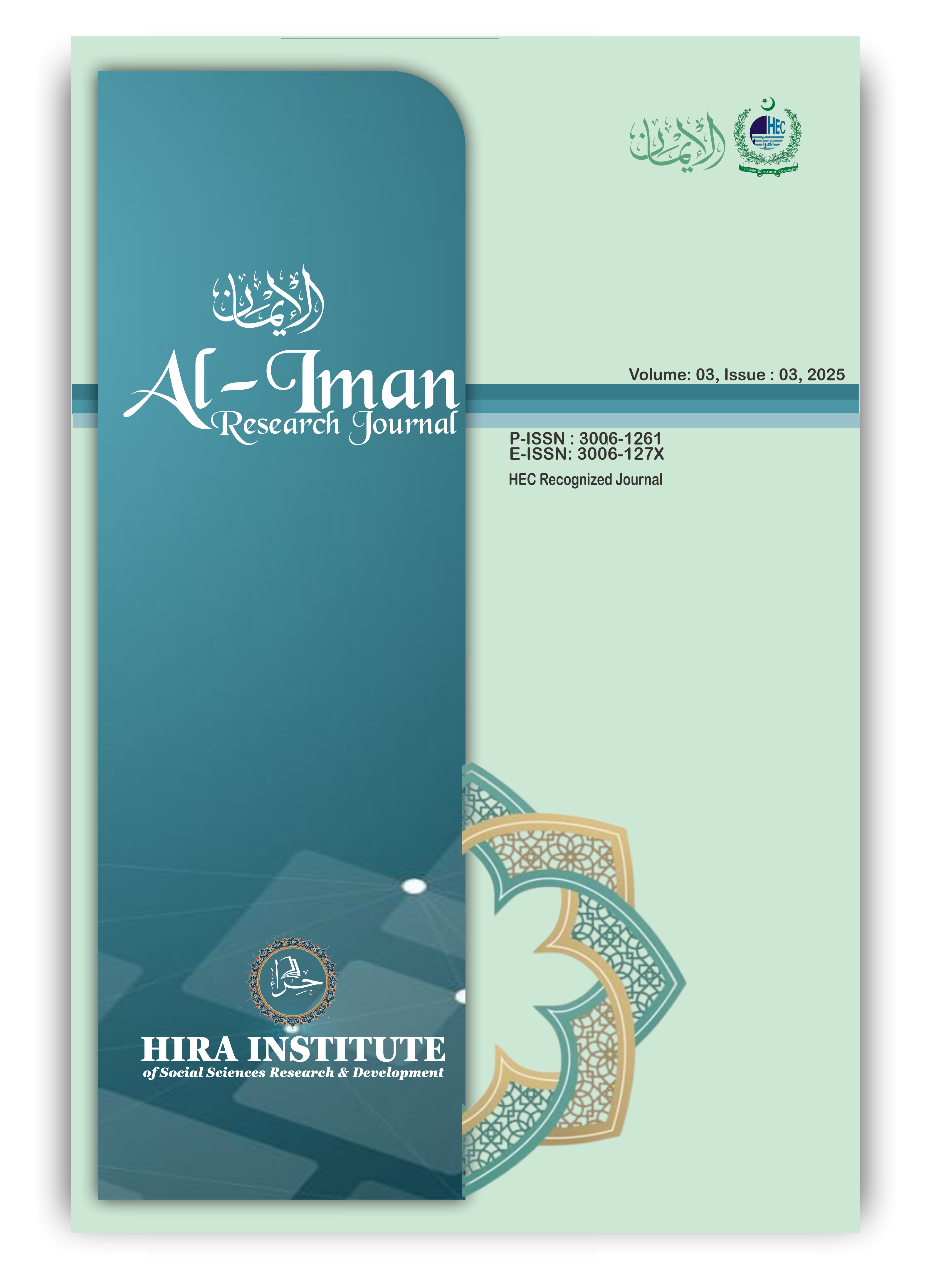Cultural Identity and Pragmatic Competence: A Cross-Cultural Analysis of Punjabi and Pashto Learners of English in Pakistan
DOI:
https://doi.org/10.63283/IRJ.03.03/19Keywords:
Interlanguage Pragmatics, Speech Act, Pragmatic Competence, Cultural Identity, Pakistani Learners, Cross-Cultural CommunicationAbstract
This study examines the influence of cultural identity on pragmatic competence among Punjabi and Pashto speakers learning English in Pakistan. It explores how learners perform speech acts such as requests, refusals, and apologies, focusing on how sociocultural norms shape their communicative strategies. Grounded in the framework of Interlanguage Pragmatics and constructivist epistemology, the study employs both Discourse Completion Tasks (DCTs) and semi-structured interviews to collect data from students and instructors. Through thematic analysis, distinctive pragmatic tendencies were observed. Punjabi learners exhibited a preference for directness and pragmatic efficiency, which sometimes compromised relational politeness. In contrast, Pashto learners demonstrated a tendency toward indirectness, elaborate politeness expressions, and a higher concern for maintaining social harmony and respect. These differences reflect how deeply cultural identity and social hierarchy influence communicative behavior in English as a second language context. The findings reveal that pragmatic transfer—both positive and negative—occurs frequently and is strongly rooted in learners’ cultural frameworks. The study highlights that effective English language teaching should integrate elements of Culturally Responsive Pedagogy to address such variations. It further emphasizes the need for cross-cultural awareness, pragmatic flexibility, and role-based communicative training in ELT classrooms. By bridging culture and language learning, this research contributes to a more inclusive understanding of how local identities shape global communication practices.
References
Austin, J. L. (1962). How to do things with words. Oxford University Press.
Bardovi-Harlig, B. (1999). Exploring the interlanguage of interlanguage pragmatics: A research agenda for the future. Language Learning, 49(4), 677–713. https://doi.org/10.1111/0023-8333.00022 DOI: https://doi.org/10.1111/0023-8333.00105
Bardovi-Harlig, B. (2001). Evaluating the empirical evidence: Grounds for instruction in pragmatics? In K. R. Rose & G. Kasper (Eds.), Pragmatics in language teaching (pp. 13–32). Cambridge University Press. DOI: https://doi.org/10.1017/CBO9781139524797.005
Blum-Kulka, S., House, J., & Kasper, G. (1989). Cross-cultural pragmatics: The study of language use. Ablex Publishing.
Brown, P., & Levinson, S. C. (1987). Politeness: Some universals in language usage. Cambridge University Press. DOI: https://doi.org/10.1017/CBO9780511813085
Bourdieu, P. (1991). Language and symbolic power. Harvard University Press.
Canale, M., & Swain, M. (1980). Theoretical bases of communicative approaches to second language teaching and testing. Applied Linguistics, 1(1), 1–47. https://doi.org/10.1093/applin/I.1.1 Chomsky, N. (1957). Syntactic structures. Mouton. DOI: https://doi.org/10.1093/applin/I.1.1
Ishihara, N., & Cohen, A. D. (2010). Teaching and learning pragmatics: Where language and culture meet. Pearson Education.
B. B. (1992). The other tongue: English across cultures. University of Illinois Press.
Kasper, G. (1997). Can pragmatic competence be taught? NetWork, 6, 105–119.
Kasper, G., & Blum-Kulka, S. (1993). Interlanguage pragmatics. Oxford University Press. DOI: https://doi.org/10.1093/oso/9780195066029.001.0001
Kramsch, C. (1998). Language and culture. Oxford University Press.
Krashen, S. D. (2003). Explorations in language acquisition and use. Heinemann.
Levinson, S. C. (1983). Pragmatics. Cambridge University Press. DOI: https://doi.org/10.1017/CBO9780511813313
Norton, B. (2013). Identity and language learning: Extending the conversation. Multilingual Matters. DOI: https://doi.org/10.21832/9781783090563
Norton, B., & Toohey, K. (2011). Identity, language learning, and social change. Language Teaching, 44(4), 412–446. https://doi.org/10.1017/S0261444811000309 DOI: https://doi.org/10.1017/S0261444811000309
Rahman, T. (2002). Language, ideology and power: Language-learning among the Muslims of Pakistan and North India. Oxford University Press.
Rose, K. R., & Kasper, G. (Eds.). (2001). Pragmatics in language teaching. Cambridge University Press. DOI: https://doi.org/10.1017/CBO9781139524797
Scollon, R., & Scollon, S. W. (1995). Intercultural communication: A discourse approach. Blackwell.
Searle, J. R. (1979). Expression and meaning: Studies in the theory of speech acts. Cambridge University Press. DOI: https://doi.org/10.1017/CBO9780511609213
Taguchi, N. (2015). Instructed pragmatics at a glance: Where instructional studies were, are, and should be going. Language Teaching, 48(1), 1–50. https://doi.org/10.1017/S0261444814000263 Thomas, J. (1983). Cross-cultural pragmatic failure. Applied Linguistics, 4(2), 91–112. https://doi.org/10.1093/applin/4.2.91 DOI: https://doi.org/10.1017/S0261444814000263
Waseem, M. (2025). Sociolinguistic trends in Pakistan: Language, identity, and policy. National Language Authority.
Wierzbicka, A. (1991). Cross-cultural pragmatics: The semantics of human interaction. Mouton de Gruyter. DOI: https://doi.org/10.1515/9783112329764






